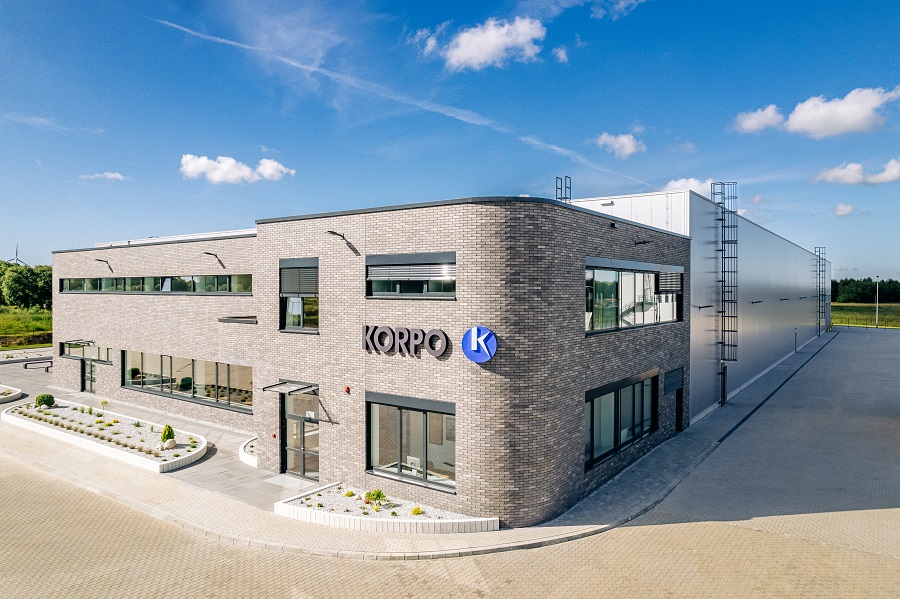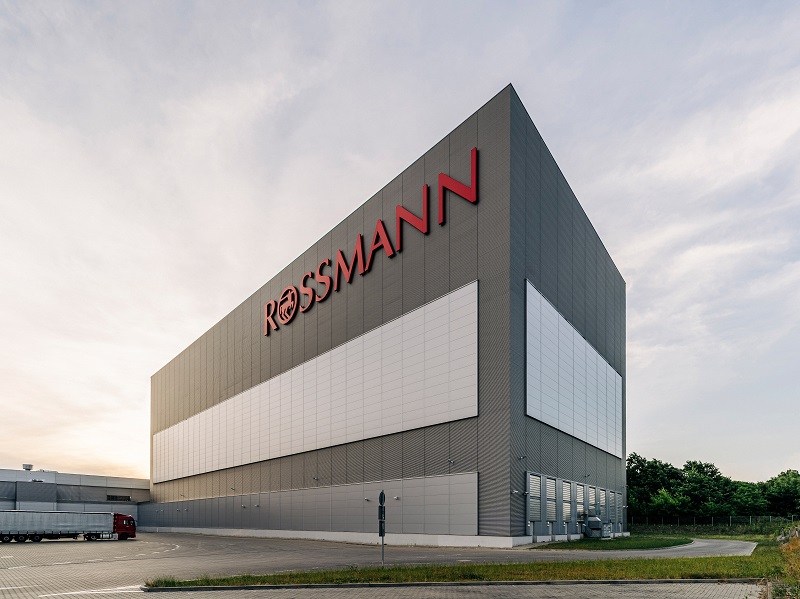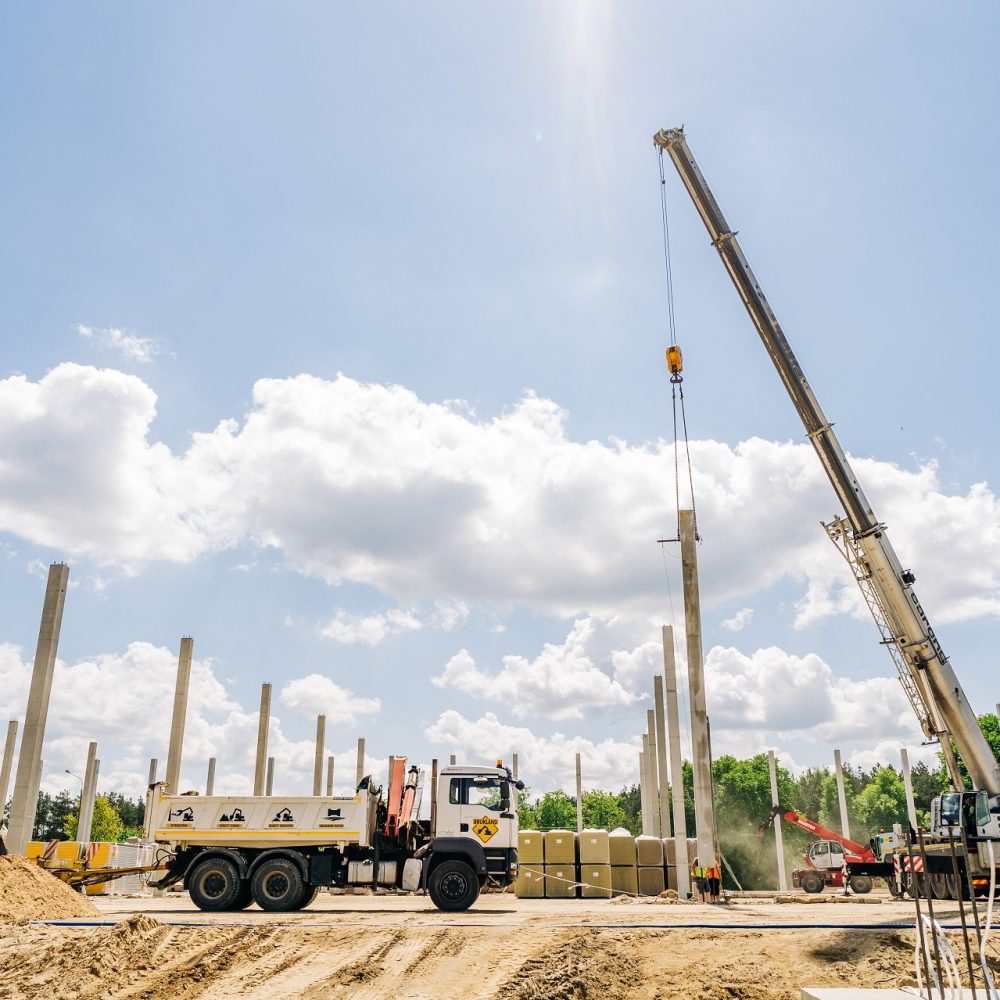
In recent times, due to the greatest energy crisis for many years, a great deal of attention has been paid to the energy efficiency of warehouses and production halls – new facilities have to be built using technology and materials that reduce energy and heating costs. Much less is said about insolation in industrial halls, which contributes to excessive heating. And this problem, due to ongoing climate change, will only increase. Therefore, effective protection from excessive sunlight plays an important role today in terms of thermal comfort in production halls.
The location and massing of the industrial halls make them extremely susceptible to the sun, which, despite appearing to benefit, does not actually mean that. They are built on industrial sites, generally devoid of tall trees that provide natural protection from the sun rays. What is more, the building’s enormous roof is not only often its largest partition, but is also at a near-right angle to the sun for at least half of the year – and this shortens the path of heat to the rooms inside, increasing their heating.
Risks of excessive insolation in industrial halls
Providing good working conditions indoors is the responsibility of every employer, regardless of whether the work is done in an office building, a service building or in industrial halls. The air must be clean, with the right humidity and temperature – conditions that affect the health and well-being of employees, and thus also affect their work efficiency. Buildings that are exposed to intensive sunlight will overheat rapidly during the spring and summer months without properly selected solar protection. And this will reduce comfort in the industrial hall.
Another effect of the sun rays is also worth remembering. These, coming into the building from different angles, can reflect off objects inside, causing a glare effect on workers. A sudden, unexpected glare can have fatal consequences, especially in the production halls requiring workers to act with precision and speed. Hence it is so important to reduce glare and reflections in the hall.
Protection from sun rays in the hall
When talking about the effect of sun rays in the context of excessive heat build-up in industrial halls, it is worth considering it from three aspects – the roof, the façade and the windows themselves. This is because in each of them, there are hidden dangers that must be eliminated at the design stage and then during construction work.
Roof. Although the primary function of this partition is to protect the building from adverse weather conditions, it also plays an extremely important role in the thermoregulation process inside. Note that an improperly designed roof, covering its outer layer with materials that heat up easily, e.g. roofing felt, or installing skylights in the roof without the appropriate protective coatings, cause it to act like a large solar collector, releasing heat into the interior. How can this be remedied? Firstly, the correct insulation thickness must be provided – this is clearly defined by standards and guidelines. In recent years, the requirements for the insulation of the envelope have increased, with the result that the walls and roof are increasingly better at protecting the building from both escaping heat and excessive heating. And secondly, care should be taken to ensure adequate light reflection by covering the roof with a specialised high-reflectivity membrane or appropriately sized skylights. Both solutions will significantly reduce the temperature of the roof, and this is a straightforward way to reduce the temperature in the building itself.

Façade. To deal with excessive heat in an industrial hall, you do not need to invest in an expensive air conditioning system straight away. In addition to the roof structure, the walls, more specifically the insulation layer, will help to solve the problem effectively. Although it is primarily seen as a guardian of the heat escaping to the outside, it also plays a significant role in the opposite direction – if it is hotter than 30°C outside, the right insulation will keep the industrial hall comfortable in terms of temperatures. The solution works both ways – in winter it protects the building from heat escape, while in summer it prevents heat from penetrating into the building.
But the potential of walls in the thermal regulation of halls does not end here. These partitions in the case of production halls are usually made of multilayer sandwich panels. As already pointed out, the insulation layer plays the most important role in it, but the coating is also important. Sheet steel cladding with a highly reflective coating in light colours provides very good protection against excessive sunlight and thus protects the building better against excessive heat during hot weather than the dark colours do. Studies show that light-coloured façades (colour group I) heat up to around 55°C, while their dark counterparts even heat up to over 90°C!
But bright colours, which are more effective at reflecting light, are important from another point of view. Namely, the durability of the partition. A natural property of sandwich panels is that they are subject to thermal deformation. The most significant changes occur in winter, when the greatest day/night temperature amplitudes occur. It is also worth being aware that on a cold winter day, the sun rays fall mainly on the façade at this time of year. In addition to that, rays reflected from the snow can still fall on the façade, further increasing its heating. There is an expansion of the wall materials and at night, when the frosts come, they quickly shrink. The alternation of this process adversely affects the outer cladding, leading to a shorter service life.
Types of window coverings in industrial halls
Adequate lighting, alongside temperature or humidity, is a factor that influences comfort in the industrial hall. It goes without saying that it is best to bring in natural light – the most beneficial light for humans. This can be done in two ways: through façade windows or skylights. The installation of windows in the façade may prove to be an inefficient solution, especially in the case of wide production halls, as the central part of the building will not be illuminated in this way. Moreover, windows on the wall may simply not be very functional, especially if you place machinery and technical equipment against the wall.
For this reason, skylights in the form of long ridge light strips, sloped light strips or single points are a better and much more common solution for production halls. They let a lot of light into the interior, and their main advantage is that – unlike windows on the façade – they evenly illuminate the interior of the hall. Another advantage is the possibility of smoke dampers or a ventilation function integrated, for example, with a weather station. Note, however, that the lighting benefits of installing skylights can, as already mentioned, negatively affect thermal comfort, leading to an increase in the temperature inside the building through the heating of the floor, shelving or machinery. The skylights are therefore coated with special protective coatings with a high reflection coefficient, which at the same time prevents glare for those working in the halls.

As already mentioned, façade windows are not a popular solution in traditional industrial halls. But these are slowly becoming a thing of the past – recent years have shown how rapidly industrial construction is changing. Nowadays, facilities – both manufacturing and warehousing – are increasingly playing an administrative and business role in addition to their primary function. They are accompanied by large, high-end office spaces that are no different from typical high-end office buildings in city centres. Their common features include large glazing surfaces, typical of modern construction. And while they are undoubtedly visually appealing, they require appropriate covers. What solutions can be used? These can be traditional horizontal or vertical internal blinds, but there is also an increasing use of externally mounted elements: roller blinds, canopies or light catchers. Not only do they work well as window guards in a hall, but they are also architectural elements that make the façade more interesting.
Types of glare shielding in the hall
When deciding to illuminate a hall with natural light, it is important to pay attention to the reflections inside. This is because the sun rays entering through window openings or skylights in the roof can reflect off objects in the building and dazzle workers uncontrollably. And such a recurring situation is not only detrimental to their health but, above all, can lead to situations that endanger the safety of production workers. What can help? Similar solutions to those previously mentioned, i.e. blinds, sun breakers, as well as specialised films applied to windows and modern window glass, which will provide effective protection against the sun rays.



